You are here: Books --> Effective Onscreen Editing 4th edition--> Word 2016 Chapter 11: Editing in Special Situations
Vous êtes ici : Livres --> Effective Onscreen Editing 4th edition --> Word 2016 Chapter 11: Editing in Special Situations
Chapter 11: Editing in Special Situations
Hocine bibo aut in eum digitos insero? (Do I drink this or stick my fingers in it?)—Henry Beard, Latin for all Occasions
Software and reference links for all versions of Word
This Web page contains instructions on the following subjects:
Changing the creator's or reviewer's name for a document
Inserting symbols
Inserting text from a file
Keystroke shortcuts for typing special characters (PDF file)
Macro to change the color of HTML tags
Remove color applied to HTML tags
Right Angels and Polo Bears blog
Turning off the Asian character grid
Changing the creator's or reviewer's name for a document
To change the name recorded as the creator of a document, open the "File" menu and select "Properties":
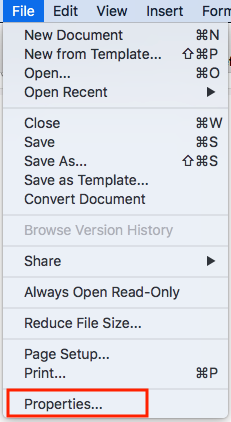
Select the "Summary" tab, and then enter a new name in the "Author" field:
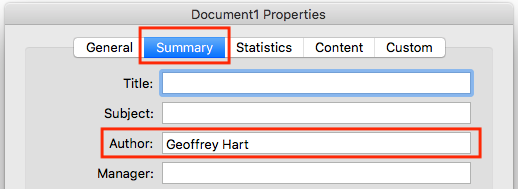
To change the name that will be associated with any tracked changes, open the "Preferences" palette and select "User Information":
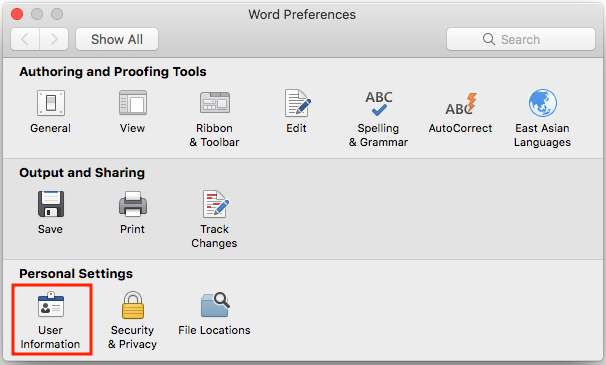
Enter a new name and initials that Word will use to identify all subsequent tracked changes:

Inserting symbols
To insert a symbol, open the "Insert" menu, and then select "Advanced Symbol":

From the "Symbol" palette, you can select symbols and special characters from any font, insert them, or define an AutoCorrect entry (see Chapter 10 for details) or keyboard shortcut (see Chapter 3 for details) for the symbol:

Inserting text from a file
In the Ribbon's "Insert" tab, open the Object icon's menu and select "Text from file":

Macro to change the color of HTML tags
Copy the text of this macro into Word's macro editor following the instructions in Chapter 10:
Sub ColorHTMLtags()
' ColorHTMLtags Macro
' Macro recorded 2/9/08 by Geoff Hart
'
Selection.Find.ClearFormatting
Selection.Find.Replacement.ClearFormatting
Selection.Find.Replacement.Font.Color = wdColorGray25
With Selection.Find
.Text = "[<]*[>]"
.Replacement.Text = "^&"
.Forward = True
.Wrap = wdFindContinue
.Format = True
.MatchCase = False
.MatchWholeWord = False
.MatchWildcards = True
.MatchSoundsLike = False
.MatchAllWordForms = False
End With
Selection.Find.Execute Replace:=wdReplaceAll
End Sub
If you prefer a lighter or darker color for the tags, change the "25" in "wdColorGray25" to a larger or smaller number (greater than 0 and less than 100).
Remove color applied to HTML tags
If you've applied a color (e.g., light grey) to the HTML tags so you can edit the document with less risk of damaging the tags, you may also want to remove the color when you're done. To do so, first turn off revision tracking. Next, select the whole document (Command+A). Select the Ribbon’s "Home" tab, open the menu beside the font color icon, and then select “Automatic” to restore the colors defined by the paragraph and character styles:
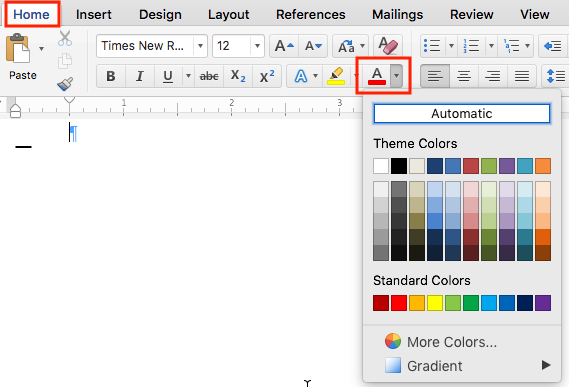
Right Angels and Polo Bears blog
Adrienne Montgomerie's Right Angels and Polo Bears blog provides an ongoing series of useful articles on editing, including onscreen editing. Adrienne also offers courses in editing PDF files.
Turning off the Asian character grid
If you have not installed support for Asian languages and still want to turn off the document grid, try the following macro (see Chapter 10 for details on how to copy and use macros):
Sub TurnOffGrid()
‘ TurnOffGrid Macro
ActiveDocument.PageSetup.LayoutMode = wdLayoutModeDefault
End Sub
To install support for east Asian languages, consult Microsoft's article “Turn on East Asian language features in Office for Mac”.
If you have installed support for Asian languages and need to turn off the grid that is used to align Asian characters, open the "Format" menu and select "Document":
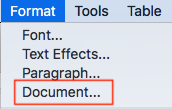
Select the "Document Grid" tab, select the "No Grid" checkbox, and under the "Apply to" menu, select “Whole document”:
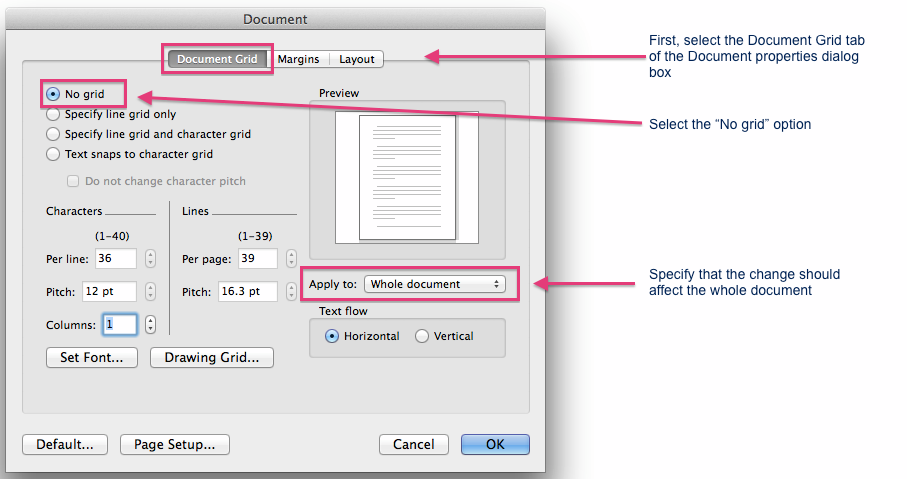
©2004–2025 Geoffrey Hart. All rights reserved.









